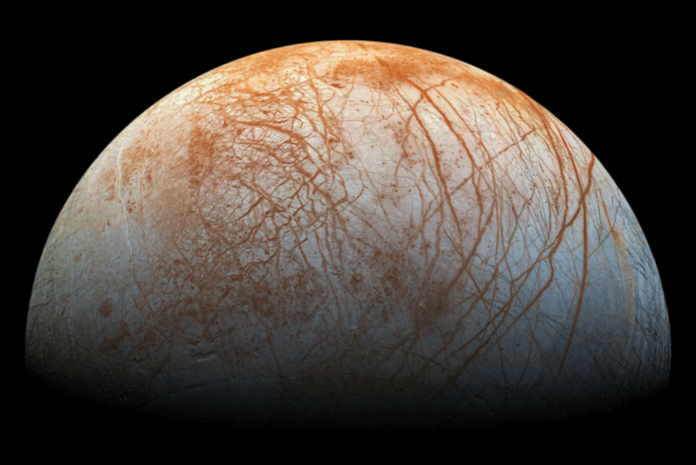
Is Earth the Only Place in the Solar System with Life?
At present, astronomers are unable to definitively answer whether Earth is the sole haven of life in our solar system. There are still largely unexplored worlds, such as Jupiter’s moon Europa, that hold potential for life beneath their frozen surfaces. Thanks to the Juno spacecraft, more pieces of this cosmic puzzle are coming together.
The Juno probe has been orbiting the largest planet in our solar system for several years and, in September 2022, it focused its camera on Europa’s icy surface. At that time, Juno flew at a distance of just 355 kilometers (about 220 miles) from the natural satellite, roughly the distance between Amsterdam and Frankfurt. It had been quite some time since a spacecraft visited Europa so closely; the previous occasion dates back to 2000 with the Galileo spacecraft.
Through the new sharp images, astronomers discovered that the ice crust at both poles is not where it should be. Another high-resolution photo revealed recent plume activity, indicating that the ice surface might have been affected by brine bubbling to the top.
Ovals, Depressions, and Plume Deposits
The photos showed large ice blocks, walls of ice, steep slopes, and troughs. They also revealed significant oval depressions in the ice crust, ranging from 20 to 50 kilometers in size. Below is an image featuring such a depression, named ‘Platypus’ (bottom-right corner).
Approximately fifty kilometers north of Platypus, dark spots can be observed on the surface, indicated by a blue box in the photo. These are cryovolcanic plume deposits. “This indicates that there is still activity occurring on the surface today and that water exists beneath Europa’s surface,” concluded researcher Heide Becker from NASA’s Jet Propulsion Laboratory.
A Shifting Ice Cap
Beneath Europa’s icy exterior lies an ocean. Scientists believe that the ice cap floats on this ocean and moves. When the ice cap detaches from the rocky seafloor, it creates cracks. “It is the first time we have mapped these cracks in the southern hemisphere of Europa,” said Juno scientist Candy Hansen.
Missing Crater
Another remarkable discovery: “Crater Gwern is missing,” stated Hansen. This twenty-kilometer-wide impact crater turned out not to be a crater at all, but a series of intersecting ice ridges casting an oval shadow on the icy surface.
Upcoming Visits to Europa
Anticipation is building for the Europa Clipper mission, set to launch this coming fall. This mission will undertake dozens of flybys of Europa to gather more information about the ocean beneath its thick ice crust. The spacecraft is equipped with various instruments capable of thoroughly investigating the moon. Though the Europa Clipper will only arrive at the moon in 2030, it promises to potentially answer the intriguing question: Is there life on Europa?











